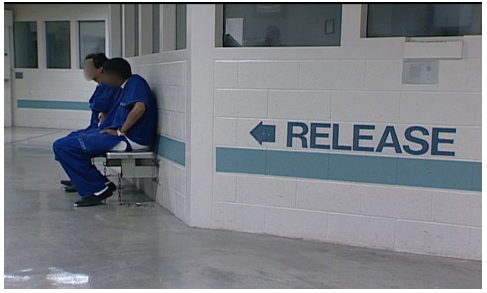CommentsUNINTENDED CONSEQUENCES-Politics will never exist without spin doctors. Yet, as cynical as our political system has become, recent ballot measures sold to the public as "public safety" measures have gone beyond the pale. Nearly every soft on crime law enacted in the last half decade included the words "safe" or "safety" in the description. No two better examples exist than Propositions 47 and 57.
Prop 47 advocates called it the "Safe Neighborhoods and Schools Act." Prop 47 did nothing for neighborhoods except to dramatically increase property crime. It did nothing for schools except for making undelivered promises to increase funding.
Last week, the California Supreme Court delivered some common sense reality to Prop 47 in People v. Valencia. At issue were "third strikers" -- criminals who have two or more prior convictions for serious or violent crimes. Under the "three strikes" law, a criminal who had two or more prior "strike" convictions and who then committed any new felony offense would receive a sentence of 25 years to life. As originally written and implemented, that sentence was mandatory unless a judge used her discretion to "strike" one or more of the prior convictions at sentencing. But the public became disillusioned with a sentencing scheme that was, at times, perceived as inflexibly harsh.
In 2012, Proposition 36 was passed, limiting the 25 years to life sentence to cases where the new felony offense was also a serious or violent crime. It also allowed inmates sentenced under the old rules to petition for resentencing. Crucially, however, a judge could deny a petition to reduce the sentence if the court, in its discretion, determined that the inmate "would pose an unreasonable risk of danger to public."
Enter Prop 47. It reduced certain drug and theft felonies to misdemeanors. Prop 47 also had a resentencing provision which allowed inmates to petition for a reduction in their felony sentence if that crime had since been reduced to a misdemeanor. Like Prop 36, Prop 47 gave the court discretion to deny a reduction if resentencing "would result in an unreasonable risk of danger to public safety. But the discretion granted was so limited as to be illusory. Under Prop 47, a judge could only refuse to reduce the sentence if he or she found an unreasonable risk that the inmate would commit one of eight specific types of violent crime: homicide, attempted homicide, murder, solicitation to commit murder, sexual assault on a child under age 14, assault with a machine gun on a police officer or firefighter, possession of a weapon of mass destruction, or any offense normally punishable by life or death.
Based on the overlap in these different provisions, two third-strike inmates petitioned for resentencing, arguing that the language contained in Prop 47 should apply to them.
The California Supreme Court observed that if the petitioners' argument was correct, it would make it easier "for recidivist serious or violent offenders to have their life sentences vacated, and render them more likely to be released."
The California Supreme Court wisely rejected the inmate's appeal, holding that there was nothing in Prop 47 that suggested it was intended to apply to serious and violent third strikers seeking resentencing. "[N]either the initiative's text nor its supporting materials describe any intention to amend the criteria for the resentencing of recidivist or violent felons…." Nor, said the court, was such a result predicted by the Attorney General or the Legislative Analyst in their summary of the measure, or discernable to the voting public.
Most illuminating, however, was the dissent of Justice Liu, who in blasting the majority for the decision wrote: "The court today concludes that the drafters of Proposition 47 pulled a fast one on an uninformed public." Truer words have never been spoken. With their deliberately misleading title referencing "safe schools" and platitudinal language about public safety, the drafters of Prop 47 fooled the public to accomplish their goal of decriminalizing property crimes and releasing convicted criminals from custody.
Those behind Prop 57 took their cues from Prop 47, selling the public with assurances that its early parole provision only applied to "non-violent" offenders. That's news to the California Department of Corrections and Rehabilitation, whose published regulations on early parole explicitly include inmates sentenced to prison for violent offenses. This week, was an example of that regulation in effect, with the Fresno DA's office highlighting an inmate who attempted to stab two people being paroled two years into an eleven-year sentence thanks to Prop 57.
Lawyers can pore over the Valencia opinion for its lessons on the intricacies of statutory construction. The big takeaway from Valencia was contained in the dissent, which inadvertently highlighted a truth worthy of repeating: "The court today concludes that the drafters of Proposition 47 pulled a fast one on an uninformed public."
(Michele Hanisee is President of the Association of Los Angeles Deputy District Attorneys, the collective bargaining agent representing nearly 1,000 Deputy District Attorneys who work for the County of Los Angeles. To contact a Board member, click here. Prepped for CityWatch by Linda Abrams.
-cw














